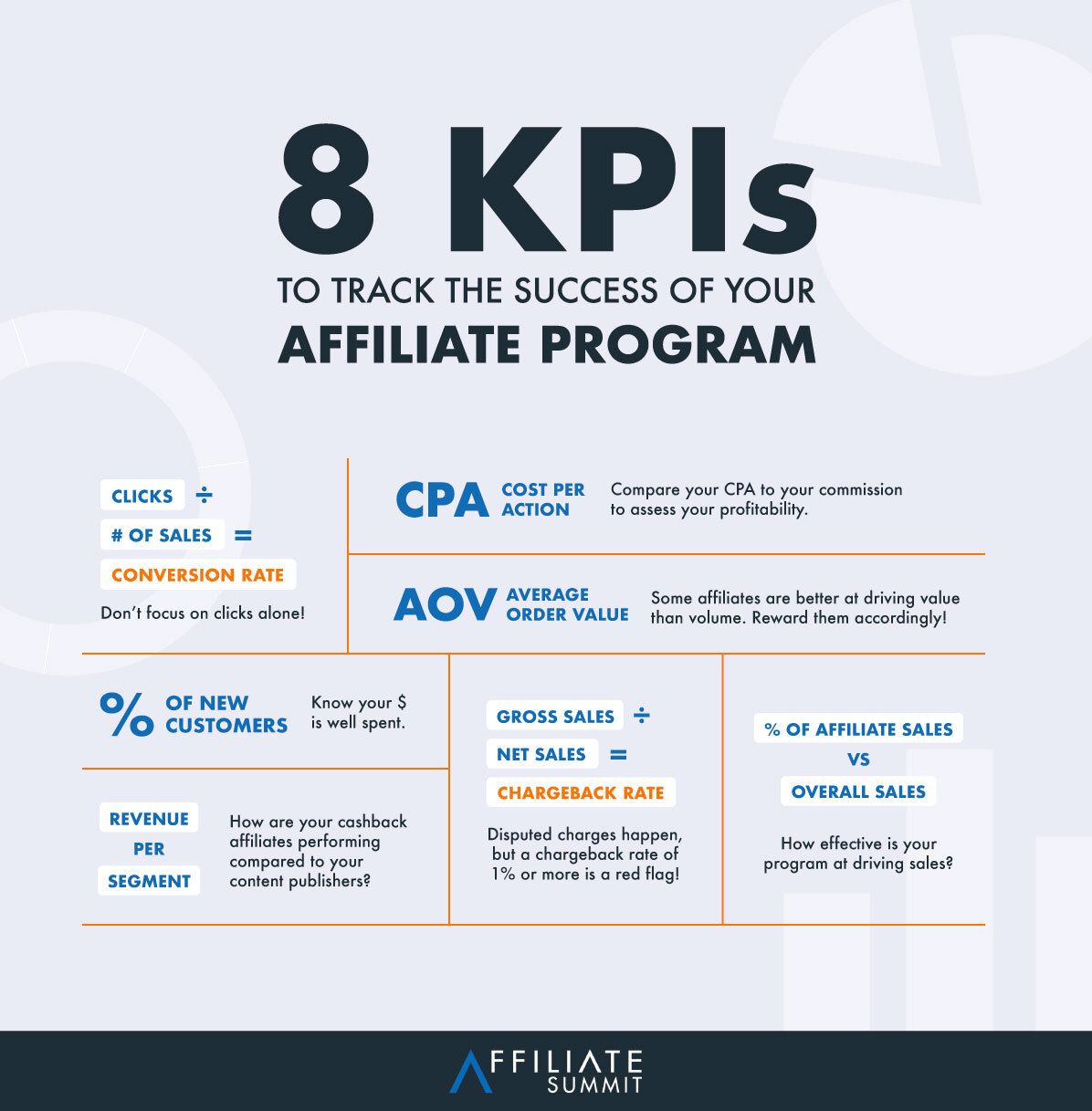Blogs
8 KPIs to Track the Success of Your Affiliate Program
)
When it comes to affiliate marketing, there's a lot to keep track of. Outside of the basic terms you need to know, understanding success (or failure) can be complex. If your affiliate program is struggling, you need to know exactly how to diagnose the problem.
'Is it an underperforming affiliate? Is it a problem with the ad? Is the landing page clunky? There can several factors at play when things aren't going well.'
'You also need to understand your margins and profitability. Does the cost per lead make sense compared to your average customer lifetime value? How much scale can you afford?'
'These are the top 8 key performance indicators you need to track to understand the success of your affiliate program.
'
1 - Clicks ' # of Sales = Conversion Rate
So many marketers and affiliate program managers get hung up on clicks alone. Clicks are great, because they indicate an interested visitor. But never lose track of your most important goal: sales. Tracking your conversion rate means you can analyze the effectiveness of what happens after the click. If you're seeing a lot of clicks, but not a lot of sales, something's not right with your marketing assets post-click. If the conversion rate is good, but clicks are lacking, then focus needs to be on ad creative, copy, or whatever generates the click from the affiliate.
2 - Cost Per Action (CPA)
What action do you want your customer to take? Actions can mean lead generating actions like filling out a form, downloading a PDF, or asking for a quote. A sale or conversion could also be an action! Pay per click (PPC) and cost per click (CPC) are often confused with CPA. The important distinction to note is that PPC and CPC measure traffic, whereas CPA measures sales and leads. Compare your CPA to your commission to assess your profitability.'
'
3 - Average Order Value (AOV)
Revenue ' Number of Orders = Average Order Value. Compare your website's AOV to the affiliate channel's AOV to see how the affiliate channel drives value. Some affiliates are better at driving value than volume. Reward them accordingly!
''4 - % of NEW Customers'
Because every business depends on new customers, the affiliate's ability to drive new customer acquisition indicates their value to your program over time. A great way to increase your new customer rate is to offer a higher commission to your affiliates for generating new customers rather than repeat customers.'
'5 - Gross Sales ' Net Sales = Chargeback rate
Consumers initiate chargebacks (dispute charges with their bank) when they suspect fraud or unauthorized activity on their credit card. If the chargeback rate is higher than 1%, you've got a situation on your hands that could cost you revenue, heavy fees, and maybe even your relationship with your payment processor. You may also want to look for additional signs of affiliate fraud, since your customer clearly feels misled by the affiliate's marketing efforts.
'
6 - Revenue Per Segment
How are your cashback affiliates performing compared to your content publishers? Some verticals, offers and products may be better suited for one segment over the other. In order to maximize your ROI for your affiliate program overall, you'll want to increase spend for well-performing segments, and find a better fit for the struggling segment.
'7 - Incremental Revenue from Affiliates
The revenue from new customer sales driven by affiliates is one of the strongest indicators of the health of your program. It gives the big picture and puts a 'price tag' on the value of the channel to your business. The proof is in the pudding when it comes to showing the value of your affiliate program.
'8 - % of Affiliate Sales vs. Overall Sales
This'metric is the BEST way to measure your success in context. If you need to convince your boss (or anyone) of the success of your program, compare the % of sales driven by affiliates to your overall sales. When the % of sales driven by affiliates gets close to that of other marketing channels,' you've proven beyond a shadow of a doubt the value that the program brings.



)
)
)
